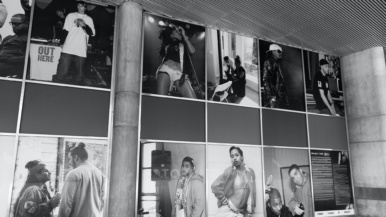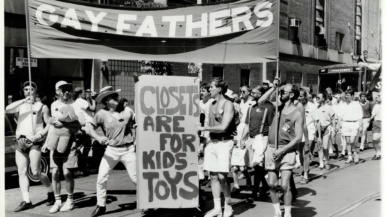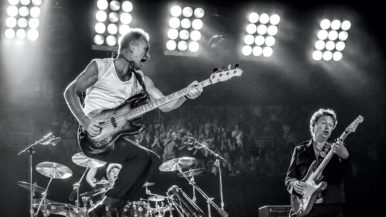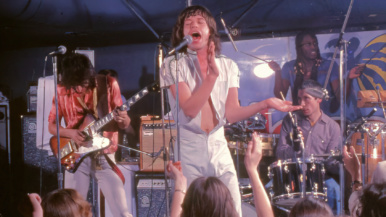Four women on what it’s like to wear the veil in Toronto

Sara Shamsavari has always admired women who wear the hijab. The British-Iranian artist and photographer is not Muslim herself, but she respects those that they wear the veil proudly—and, sometimes, with serious flair, sporting bright colours and bold designs. “Often when people see a women in a hijab, they just see the hijab,” Shamsavari says. “What was really exciting about these women were how they responded to this obstacle by shining beautifully in their style and their attitudes.”
In 2010, Shamsavari began photographing these “hijabistas” on the streets of her hometown of London. Then, she continued shooting her Veil series in New York, Paris, Philadelphia, Dubai and Toronto. She had a simple mission: show the strength, beauty and creativity of women who wear the hijab. “Whether it’s conscious or unconscious, these women are rebelling against a very narrow-minded image of who they are,” Shamsavari says. “Just try to call them oppressed.” We asked four of Shamsavari’s Toronto subjects to share what the veil means to them.

Noor Al-Saidi
Senior bank consultant, master’s of HR management student
Where did you get this veil?
I got it during a trip to the old city of Sana’a, Yemen, and wrapped it in turban style. It adds a pop of colour to my dark clothes. I like mixing and sometimes coordinating the colours and patterns of my veils with the outfits I wear—it’s fun!
What does the veil mean to you?
Choice, identity.
How do you think the hijab is perceived in Toronto?
Some people view veiled women as oppressed and weak, and believe that they need to be liberated. In smaller cities, a few people have asked me why I wear the veil. I find it’s a great chance to talk about my experience and tackle the stereotypes. In Toronto, where we value diversity, wearing a veil is not a barrier to achieving my goals. I consider myself lucky to live in a country that is tolerant and open to people from different backgrounds and cultures.

Tahsin
Artist, mother
Where did you get this veil?
I got it from Target when they were still around. The shawl around my neck was passed down to me—it was my late aunt’s, and it’s a wool blend from India. I went through many phases of wearing hijab: I used to wear lots of colour, and then I moved on to a more neutral palette. This look is a combination of the two.
What does the veil mean to you?
For me, hijab is as much a way of living as it is a physical covering of one’s hair and body. Since this photo was taken, I have stopped wearing the hijab for a slew of reasons.
How do you think the hijab is perceived in Toronto?
Thank God we live in a city like Toronto where diversity abounds. That said, it can go both ways. People are accepting of the hijab and have been for a while, but, at the same time, some people are ignorant or unaware of its meaning and purpose. With the biased portrayal of Islam in the media, it seems to be getting worse and worse for Canada as a whole, which may not be as culturally accepting as Toronto. However, I choose to focus on acceptance and tolerance instead of worry about the opinions of those that don’t seek to understand.

Zahra Haneef
Makeup artist, illustrator, designer
Where did you get this veil?
I got my scarf from a little shop at Woodside Square in Scarborough. They carried some of the best pashminas I have ever seen in a variety of styles and prints. I love this one in particular because it’s comfortable and suits my uniform of jeans and a shirt.
What does the veil mean to you?
I grew up in Iran where all grown girls and women wore the hijab, so when I started wearing it when I was nine, it felt like my ticket to the big girls club. As I’ve grown older, I’ve found it to be my ticket to success without prejudice. When I dress myself in hijab, I am taking responsibility for the way I want to be perceived in this world. When I am in hijab, I am a beautiful, strong and smart woman without a focus on the size of my boobs, the shape of my butt or the sheen of my skin. It’s a way I connect to Allah—I see his vision and why he wants what is best for me.
How do you think the hijab is perceived in Toronto?
About 12 years ago in Toronto, you would only see one or two other hijabis on the street in a day. I remember the sisterhood we felt and how we’d say salaams to each other, even if we had never seen each other before. Things have changed a lot since then. No one flinches when they see a woman in hijab anymore. However, even though there are so many of us, there is still a lack of representation within our society. I should be able to model for an H&M or Zara campaign if I can wear the same clothes as the other models, and not be excluded because I’m not willing to show my hair. We should have actors, singers and athletes in hijab everywhere.

Halima
Student
Where did you get this veil from?
I can’t recall where I got this particular hijab. It fits in with my style, though—I typically do not like to wear overly vibrant colours.
What does the veil mean to you?
My hijab is my identity. My faith is the most important thing to me, and my hijab is my way of openly showing who I love the most: Allah. I love Him so deeply that, before I speak, I want my hijab to speak loudly as a first impression. It is to tell everyone and anyone, “I am Muslim.”
Correction
An earlier version of this article included an incorrect spelling of Noor Al-Saidi's name.




